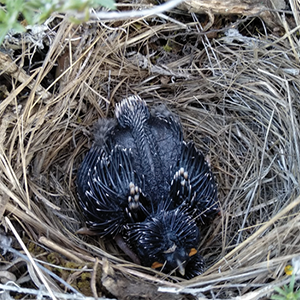First documented case of Tawny Pipit Anthus campestris nest parasitism by common cuckoo Cuculus canorus in Spanish steppes

All claims expressed in this article are solely those of the authors and do not necessarily represent those of their affiliated organizations, or those of the publisher, the editors and the reviewers. Any product that may be evaluated in this article or claim that may be made by its manufacturer is not guaranteed or endorsed by the publisher.
Authors
Interspecific brood or nest parasitism is a relatively common breeding behavior in birds. Through this reproductive tactic, brood-parasites avoid the costs associated with raising and maintaining chicks by laying their eggs in the nests of the host species in which they are specialized. The common cuckoo (Cuculus canorus) follows this brood parasite strategy. Female cuckoos lay their eggs in the nests of other bird species, mimicking egg shape, size, and color of the host species. In this paper we report the first documented case of parasitism of tawny pipit nests by the common cuckoo in Spanish steppe habitats, where no record of parasitism on this species has been reported to date.
How to Cite

This work is licensed under a Creative Commons Attribution-NonCommercial 4.0 International License.
PAGEPress has chosen to apply the Creative Commons Attribution NonCommercial 4.0 International License (CC BY-NC 4.0) to all manuscripts to be published.







